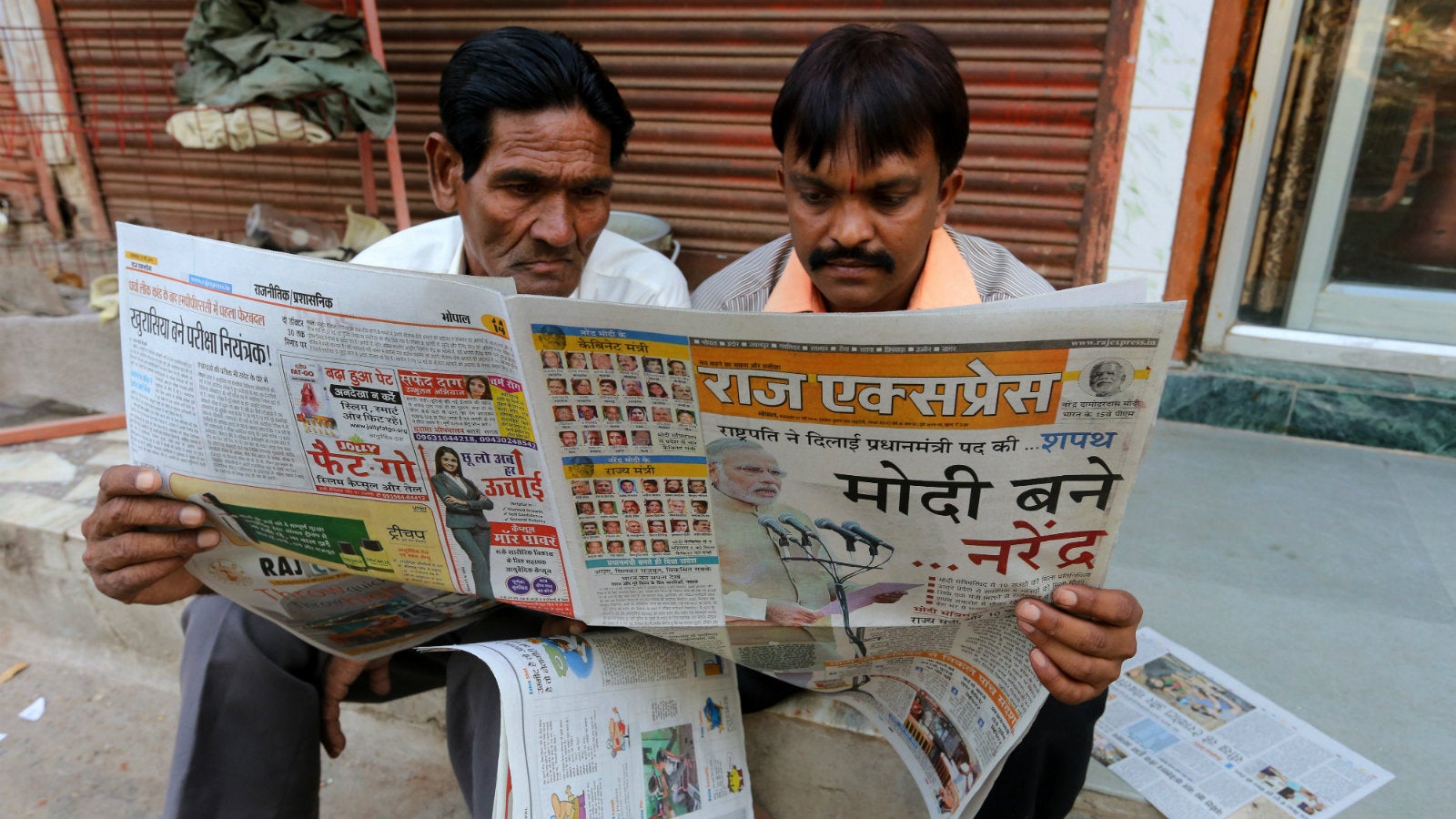By quietly expanding the role of Hindi in government, Narendra Modi is playing with fire
The Narendra Modi government is quietly expanding the role of Hindi in politics and governance, ostensibly to end the dominance of the English language.


The Narendra Modi government is quietly expanding the role of Hindi in politics and governance, ostensibly to end the dominance of the English language.
On March 31, president Pranab Mukherjee accepted a number of language-related recommendations (pdf), including one that asks all dignitaries—ministers and the president himself included—to give speeches in Hindi alone. Another suggestion accepted was to make it compulsory for central government offices to purchase Hindi newspapers and magazines.
While the president rejected a suggestion to fix a minimum level of Hindi knowledge to get government jobs, as well as the mandatory use of the language for correspondence in public shareholding companies, he did accept most of the 117 recommendations. These recommendations were originally made in 2011 by a parliamentary panel headed by former finance minister P Chidambaram.
This development comes just days after leaders in the southern state of Tamil Nadu took umbrage at some markings on national highway milestones being changed to Hindi from English. “This is bringing Hindi hegemony through the backdoor in Tamil Nadu,” the Dravida Munnetra Kazhakam’s working president MK Stalin said in a statement at the time, while also warning of protests if the number of highway signs in Hindi kept increasing.
Thus, enforcing these recommendations risks sparking a wave of linguistic unrest, which, after simmering in many parts of the country, has been dormant for a few decades.
While drawing up India’s constitution in the years after Independence, the question of language was settled with a compromise: There was to be no “national language,” in keeping with the sentiments of the majority of Indians who were, and remain, non-Hindi speakers. Hindi and English were designated official languages, not national ones, and 22 others were made “officially recognised” ones. This helped avoid the dominance of any one language in the country, particularly what was viewed as “Hindi imperialism.”
While Hindi is often (incorrectly) considered the language of the majority in India, only around 41% of the population consists of native Hindi speakers. In fact, Census 2001 includes those who speak dialects such as Bhojpuri, Magadhi, and Marwari, among others, as Hindi speakers. So, the real size is much smaller at around 26% of the population.
The new recommendations to prioritise Hindi could mark a significant departure from the compromise and could potentially alienate a vast segment of India’s society, particularly in the south and the northeast of the country.
For Modi’s Bharatiya Janata Party, “Hindi, Hindu, Hindustan” has always been an article of faith built on the identities of “native Hindi speakers,” “the Hindus,” and aggressive Indian nationalism. But if implemented, millions of Indians may not be able to understand what their own elected representatives are saying. And that doesn’t bode well for the world’s largest democracy.